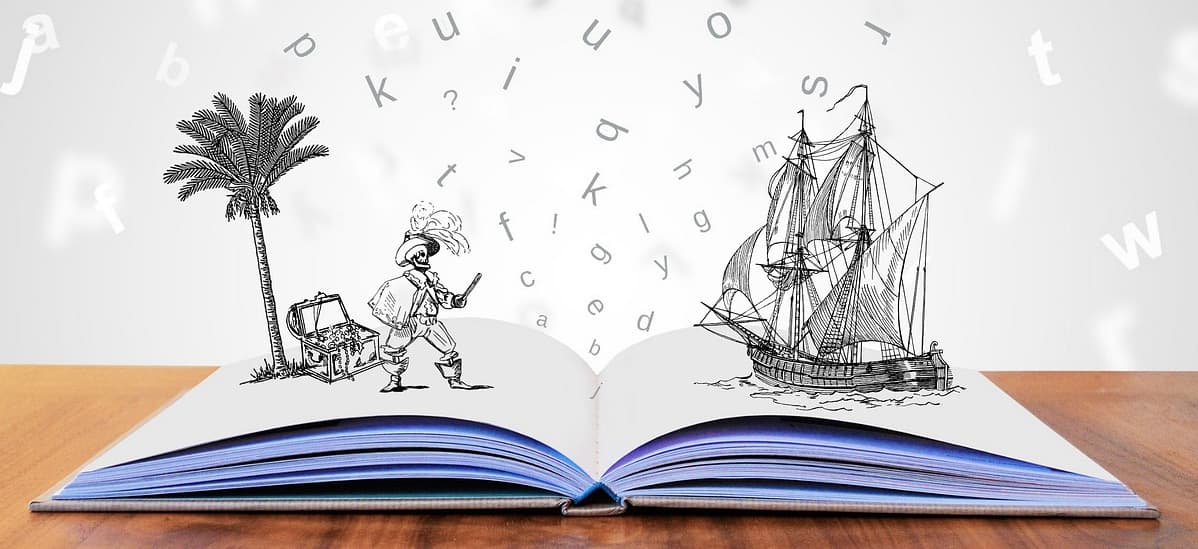Five Ways to Improve Your Storytelling Skills
Stories are a fundamental part of human communication. They’re indispensable in community life, education, religion, entertainment, and business. But why is that?
The award-winning writer and director Robert McKee emphasizes that stories enable people to “grasp the patterns of life,” not just intellectually but through a personal, emotional experience that can leave a lasting impact.
In this article, we’ll help you improve your story telling skills in five simple, easy-to-apply steps.

Benefits of Storytelling
There are some powerful statistics that support the significance of using stories in communicating various messages. According to Stanford University, stories are up to 22 times more memorable than figures and facts alone. So, incorporating great storytelling techniques can really make a difference to your writing, your business, and your personal life.
The main benefits of storytelling include:
- Engaging your readers
- Making your words more memorable
- Encouraging audience loyalty
- Triggering emotions, which help people connect with your writing
- Persuading readers to follow or subscribe
- Making your work stand out
- Creating art, of course!
5 Ways to Great Storytelling
Of course, to achieve these goals, you need to create successful, captivating stories that will resonate with your audience. Luckily, you can master your storytelling like all other communication skills. We’ll show you five ways to improve them.
Of course, this list is not exhaustive. You can find plenty of ideas on how to write better stories online, in books, and in professional writing courses, but these five ideas are a good place to start.
1. Preparation Is Key
Crafting a story to tell in your blog, book, or even during standup meetings is a creative process that involves planning and strategic decision-making. Before you start writing, you’ll need to answer a few questions:
- What is the objective of the story?
- What is the message?
- What audience is the story addressed to?
- Objective
The objective is the purpose you want to achieve with your story. You need to tell a story your audience can relate to so that they can emotionally connect with your brand. You can convey the values that you hold dear, encouraging your audience to identify with them. Or you can educate your audience about a hobby or topic. There can be many possible objectives to your story; just be clear on what you want to achieve with it.
- Message
The core message is the main point of your story, which should guide you in developing the plot. You should be able to identify your core message by summarizing the story in six to ten words. You may choose a different method, but make sure you do it before you start writing.
- Audience
Knowing your audience is key to making your story effective. Different people and groups prefer different communication styles; some may want to hear an entertaining story, while others may prefer one that encourages reflection. The type of audience you’re addressing can also impact your objective and the message of your story.
You don’t want your audience to get so distracted by unnecessary details that they miss the main point. So, start with a good plan and then implement it carefully. It will make your writing process easier and the final result much more satisfying.
2. Make It Personal and Relatable
Authentic stories make the most lasting impression on audiences. They can foster an emotional connection and trust. Just remember, you don’t need to make the story larger than life.
Personal stories are a great way to encourage empathy. This is especially true if they find the story relatable, as people are instinctively drawn to characters and worlds that remind them of themselves and their reality. You can explore some universal themes, such as love, hope, or travel, to make your audience think of their own experiences and relate to your story.
Provoking an emotional response (which doesn’t always have to be a positive one) can also make the audience relate to the story and be influenced by them. You can, for example, tell a story that will provoke strong indignation at social injustice to motivate your audience to join you in supporting a charity cause.

3. Bring It to Life with Vivid Details
Professional writers often emphasize the power of visualization in storytelling. Your readers should be able to see and experience your story in their imagination. Therefore, you need to supply them with vivid details that will guide them in the process and transport them into the world you are creating in your narrative.
For example, instead of telling them that the place you’re describing was peaceful and calm, you can guide them to that conclusion by creating this impression whenever you refer to it. You can engage the senses of your listeners or readers by mentioning sounds, colors, light, scents, and textures. Create a multi-sensory experience to immerse them in the story.
You can achieve this with words, but you can also reach for additional elements to enrich the narrative, such as illustrations, pictures, video and audio clips, animations, or other elements of interactive storytelling. It can make your story more unique, memorable, and engaging. You should be able to implement most of these elements in stories published online or conveyed in any other fashion.
4. Keep Things Simple
While details are important for creating the immersive experience described above, too many details can confuse the audience. Each element of your story should add value and serve a clear purpose. Think about each element – characters, scenes, side plotlines, dialogue. Do they enrich the story or detract from it? This can help you create a strong, clear story with depth but no fluff.
Simplicity and economy of detail are essential in the modern world, where people are constantly exposed to content, from their phones, computers, TVs, social media, billboards, and numerous other sources. It’s hard to grab their attention and even harder to keep it. That’s why you should make your story short and simple but also powerful.
There’s one more benefit to keeping a story simple and concise — it will be easier to remember and share with other people. Of course, the more people you can reach with your story, the greater its impact will ultimately be.
5. Seek Inspiration All the Time
It’s common knowledge that the best way to learn to write good stories is by reading the work of great writers. This doesn’t necessarily have to mean the classics, although it’s worth bearing in mind that these stories have made a lasting and universal impact. Still, you can find good ideas and valuable inspiration almost anywhere. The more stories you explore, the more material you will have to work with.
Given the diversity of media used to communicate and share content today, you should be accessing stories in different formats. Explore cinema, theater, YouTube videos, podcasts, blogs, animations, and even games, to see what stories are told there and how they’re conveyed.
Sharing your experience with other writers is always a good idea. You can take part in writing conferences, retreats, and courses to get inspired, get valuable instruction, and practice your storytelling skills.

Final Remarks
A good story can achieve a lot. It can make boring content interesting, facilitate understanding of abstract concepts, help people remember important facts, foster empathy, encourage brand loyalty, and much more.
That’s why strong storytelling skills matter in personal as well as professional contexts. The same basic guidelines you use to write a compelling story can apply in crafting an impressive PowerPoint presentation, structuring business process development strategies, telling engaging stories to your friends, and throughout your daily life.
Storytelling is an art that takes time to learn and practice. There is a wide range of resources, available online and offline, that you can use to improve your storytelling skills. Still, it’s worth starting with these five simple tips, trying them out, and checking the difference they can make!
.
Read More
The Science Behind Storytelling









